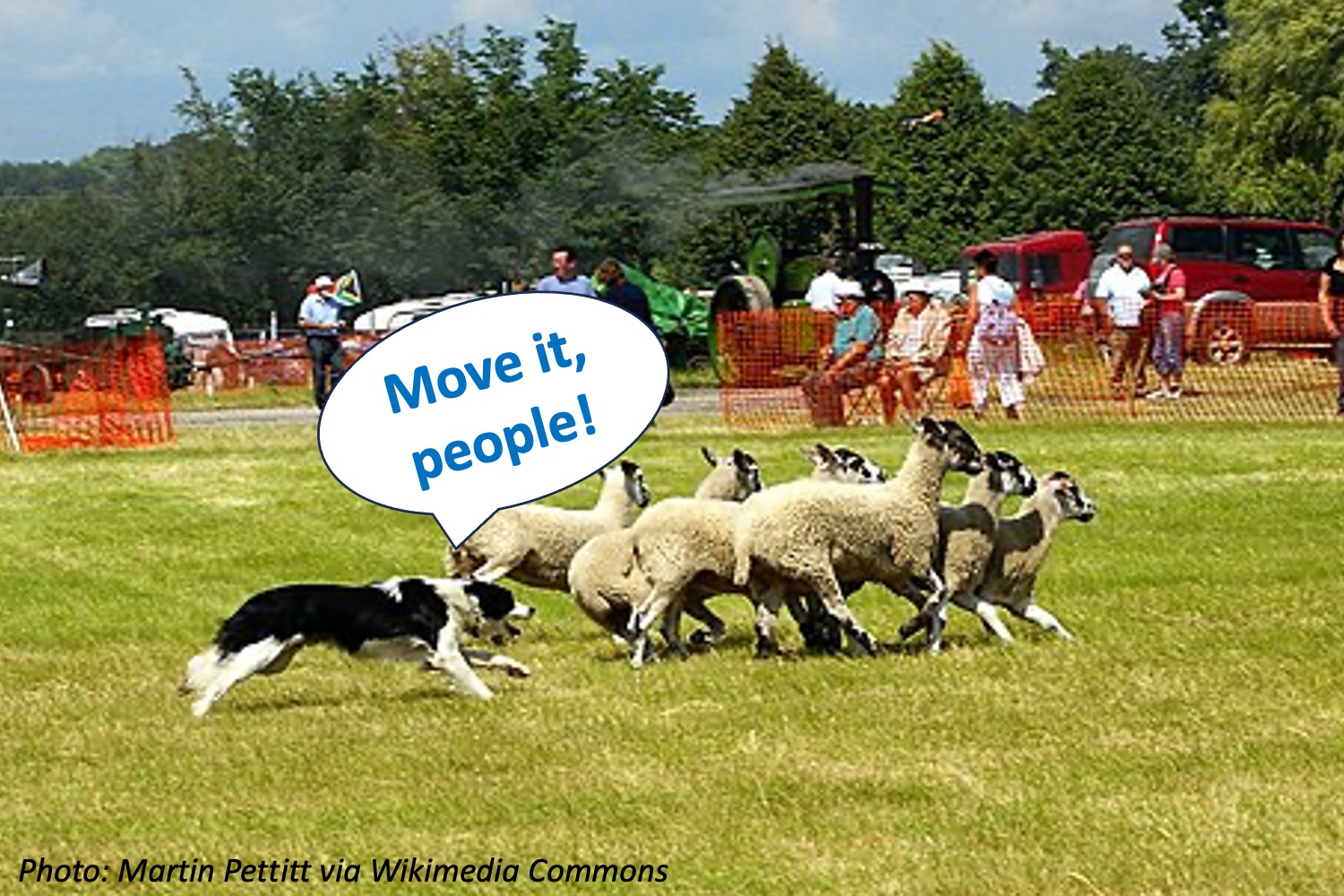A border collie works hard all day, running and barking. Border collies help farmers herd sheep, goats, and other animals. The dogs love to run around and steer the animals into a group. Border collies are super smart, so farmers have to train them young to do good things instead of bad! They first came from, well, the border between Scotland and England, and are all the great-great-great…grandkid of one dog from 1893!
Wee ones: Border collies are black and white. Find 2 black things and 4 white things in your room. Of which color do you have more things?
Little kids: If you take your border collie for a walk, how many legs do you have altogether? Bonus: If your border collie is herding 10 sheep and 1 of those sheep gets away, how many are left?
Big kids: One super-smart border collie, Striker, rolled down a car window in 11 seconds! At that rate, could he roll down 4 car windows in 40 seconds? Bonus: The “smartest dog ever,” a border collie named Chaser, knows the names of 1,000 of her toys! If she fetches 1 for you, how many more toys does she need to fetch?
The sky’s the limit: If a border collie had 4 puppies in 2000, and 4 years later each of them had 4 puppies, and 4 years later each of those had 4 puppies…how many puppies would have been born in 2016?
Answers:
Wee ones: You’ll have more white things (4) than black (2).
Little kids: 6 legs (4 + 2). Bonus: 9 sheep.
Big kids: Not quite…he would need 44 seconds (plus time to jump from seat to seat). Bonus: 999 toys.
The sky’s the limit: 1,024 puppies. 2000 was 16 years earlier, which is 4 sets of 4 years. But you also have to count the first set of 4 puppies in 2000, so it’s 5 sets of puppies. Each new set of puppies is 4 times as big as the last, so in the 5th generation there would be 4 x 4 x 4 x 4 x 4, or 1,024 puppies. Of course, dogs have puppies more often than that, so since 1893 there have been tens of thousands of them!



